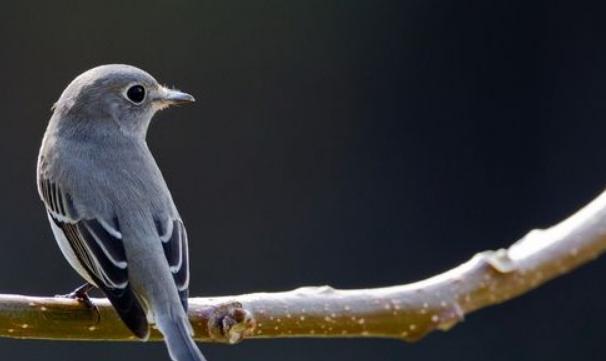Northern Grey Wren (scientific name: Muscicapa dauurica): Weight 9-16 g; body length 103-143 mm. The male and female plumage of the Northern Grey Wren are similar in color, the frontal, eye, and eye circles are white or dirty white, the head to the back of the neck, back, shoulders, waist, tail coverts and wing coverts are all gray-brown, the flight feathers and tail feathers are black brown, the secondary flight feathers and third flight feathers are brownish white, especially the third flight feathers are more pronounced brownish white, and the large coverts on the wings have narrow yellow-white margins. The underparts are white or stained white, and the thorax and flanks are pale grey. The iris is dark brown and black brown, the mouth is black, the base of the lower mouth is pale, mostly yellowish white, the mouth is broader, and the feet are black.

China is found in northeast China, Tibet, Sichuan, Guangdong, Guangxi, Hong Kong and southern Yunnan
The Northern Grey Wagtail is a summer migratory bird in northeast China, a winter migratory bird in Guangdong, Guangxi, Hong Kong and southern Yunnan, and a traveling bird in the rest of the vast region. Most of the year migrate to the northeast breeding grounds in early May and begin to migrate south in mid-to-late September. When they migrate, they are scattered and ungrouped, mostly in family groups or small groups of about 10 people when they migrate south, and most of them are scattered migrants in the later stages of migration. Migration often fly and stop, while flying and foraging for food to rest. Its natural habitats are deciduous broad-leaved forests, mixed coniferous and broad-leaved forests and coniferous forests, especially mixed forests and coniferous forests along mountain streams. It is also found in secondary forests at the foot of mountains and plains during the migration season and during wintering, in sparsely forested shrublands at the edge of forests, and in small trees and bamboo bushes on the edge of farmland. Feeds mainly on insects and insect larvae. The main insects eaten are leaf bees, ants, bees, kowtows, weevils, foam worms, flies, moths and other coleoptera, lepidoptera, orthoptera, hymenoptera and other insects and insect larvae. In addition, occasionally eat small amounts of other invertebrate and plant foods such as spiders and flowers.
The breeding season is from May to July. In late May, pairing activities and nesting begin. Usually, the nest is on the branches of tree branches in the forest, especially on the branches of the horizontal side branches, generally 1-2 meters from the main trunk and 3-10 meters from the ground. The nest is bowl-shaped, mainly composed of dry grass stems, grass leaves, tree phloem fibers and a large number of mosses, lichens, etc., and is lined with fine soft substances such as animal hair and fine grass stems. The outside of the nest is often glued with the same bark and moss as the tree, which looks like the long knotted bag of the tree, is well camouflaged and is not easy to find. The size of the nest is 7-8 cm outside diameter, the inner diameter is 5-6 cm, the height is 5-6 cm, and the depth is 3-4 cm. Each clutch lays 4-6 eggs, and the eggs are grayish white